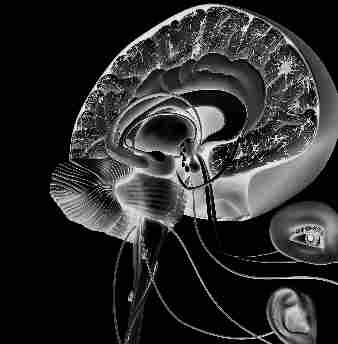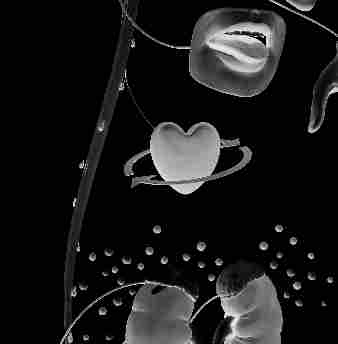Read Switch on Your Brain: The Key to Peak Happiness, Thinking, and Health Online
Authors: Dr. Caroline Leaf
Tags: #Health; Fitness & Dieting, #Christian Living, #Mental Health, #Christian Books & Bibles
Switch on Your Brain: The Key to Peak Happiness, Thinking, and Health (8 page)

for obesity to express too strongly or the genes that control
stress reactions to switch off, shortening your life as well as
decreasing your quality of life and your peace (soul harmony)
and happiness. We also are responsible for our own choices
and can apply the work of the cross and confess, repent, and
eliminate future sinful choices.
In addition, our choices (the epigenetic signals) alter the
expression of genes (the epigenetic markers), which can then
be passed on to our children and grandchildren, ready to
predispose them before they are even conceived. So our bad
choices become their bad predispositions.
The negative alternative is that you can choose to accept the
predispositions and live into them, but don’t forget that you have
to take responsibility for that as well. This very act of accepting
the predispositions and living into them becomes the signal that
activates you to become
a fat and yellow agouti mouse
. Just
the addition of a methyl group signal changes the life of the
offspring of the agouti mice. In the same way, the addition of
a positive attitude signal or a memorized and meditated-upon
Scripture signal can change the expression of the gene.
What your mind creates only your mind can take away.
Scientific Evidence of God’s Grace
Another scientific piece of evidence of God’s grace can
be seen in a structure in the middle of the brain called the
60
_Leaf_SwitchOnBrain_LS_mw.indd 60
5/16/13 1:33 PM
Your Choices Change Your Brain
hippocampus
. This seahorse-shaped structure, which pro-
cesses incoming information, facilitates the conversion of
short-term memory to long-term memory, deals with spatial
memory, and also helps control our stress response.
Scientists have found that in a loving and nurturing envi-
ronment, acetyl epigenetic markers increase on the genes in
the hippocampus that keep us calm and peaceful. The more
acetyl markers, the more these
peace genes
in the hippocam-
pus express and dampen the stress response. A toxic choice
produces the opposite effect: The acetyl markers reduce
and the methyl markers increase, causing us to have less
peace.4
So the methyl markers switch off genetic expression and
acetyl markers switch on genetic expression. The “switching
on or off” is based on the signal, and we can choose to switch.
Sometimes we want to switch off—for example switching off
the obesity genes in the agouti mice and human research.
But we want to switch on good genetic expression—for ex-
ample the stress control gene in the hippocampus. Whether
we switch on happiness, peace, and good health or switch on
anxiety, worry, and negativity, we are changing the physical
substance of the brain.
The Brain Reorganizes throughout Our Lifetime
In 1930, Santiago Ramón y Cajal5 wrote that the nerve path-
ways are fixed and immutable, but now scientists know that
the brain has the amazing ability to reorganize throughout
life, changing its structure and function through mental expe-
rience alone. If the brain can get worse by constantly focusing
on the problem, then the brain can get better by understand-
ing how to eliminate and replace the problem.6
61
_Leaf_SwitchOnBrain_LS_mw.indd 61
5/16/13 1:33 PM




Inside the Brain
fornix
corpus callosum
caudate
septum pelucidum
(part of basal ganglia)
dura mater
stria terminalis
ACG
hypothalamus
PFC
thalamus
insula & claustrum
(deep to lateral sulcus)
pineal gland
mamillary body
amygdala
basal forebrain
(contains septal nuclei)
hippocampus
pituitary gland
entorhinal cortex
(surrounds
CRF
hippocampus)
sight
cerebellum
ACTH
midbrain
nerves
pons
medulla
hear
smell
reticular activating system
(inside brain stem)
taste
touch
heart
spinal cord
adrenaline
adrenal glands
corticosteroids
kidneys
emotional
black hole
spinal nerves
_Leaf_SwitchOnBrain_LS_mw.indd 62
5/16/13 1:33 PM
Your Choices Change Your Brain
The Neuroplasticity Paradox
So neuroplasticity can operate for us as well as against us,
because whatever we think about the most will grow—this
applies to both the positive and negative ends of the spec-
trum. For example, in post-traumatic stress disorder (PTSD),
neuroplasticity has worked against the person. He or she
has experienced a crushing mental event that fundamentally
changed the meaning of their life and altered the brain struc-
turally because of the neuroplasticity of the brain. During the
trauma, the person’s mind was not thinking in soul harmony
(Col. 3:15 AMP), so consequently he or she did not choose,
process, or react correctly to the event—making the thought
that became wired in a jumbled toxic mess. As the person
relives the event over and over, it wires itself deeper into the
mind, becoming a main filter and disrupting normal function.7
Flashbacks—reliving the bad memory many times a day—
strengthen the circuit, making it worse and more debilitating.
We Can Use Neuroplasticity to Renew Our Minds
How do we fix this? In part 2, I will explain this in depth
and supply a simple explanation and a chart of my theory in
chapter 8, “The Geodesic Information Processing Theory,”8
upon which my approach is based. The overriding concept
is to apply neuroplasticity in the correct direction by rewir-
ing the event with the positive thinking of Philippians 4:8:
“Finally, brothers, whatever is true, whatever is honorable,
whatever is just, whatever is pure, whatever is lovely, whatever
is commendable, if there is any excellence, if there is anything
worthy of praise, think about these things” (ESV).
Thus the person consciously chooses, preferably under
the leading of the Holy Spirit, to bring the memory into
63
_Leaf_SwitchOnBrain_LS_mw.indd 63
5/16/13 1:33 PM
HOW TO SWITCH ON YOUR BRAIN
consciousness where it becomes plastic enough to actually
be changed.
This means the physical substrate of the memory becomes
weakened, vulnerable, malleable, and able to be manipulated.
The person then chooses to replace the crushing mental event
with the implanted word of God, which saves the soul (James
1:21). The person, as though an outsider looking in through a
window, will observe the toxic, traumatic memory as a weak-
ening and dying experience but, at the same time, observe
the new healthy experience that is growing. In practicing this
daily, the person wires the healthy new thoughts ever more
deeply into the mind.
Neurons that don’t get enough signal (the rehearsing of the
negative event) will start firing apart, wiring apart, pulling out,
and destroying the emotion attached to the trauma. In addition,
certain chemicals like oxytocin (bonds and remolds chemicals),
dopamine (increases focus and attention), and serotonin (in-
creases feelings of peace and happiness) all start flowing around
the traumatic thoughts, weakening them even more. This all
helps to disconnect and desynchronize the neurons; if they stop
firing together, they will no longer wire together. This leads
to wiping out or popping those connections and rebuilding
new ones. I explain the practical side of this process in part 2.
More Encouragement from Science
There are even more encouraging pieces of information about
neuroplasticity. For example, Universalists believe logic and
language are learned at fixed ages, and if you pass that fixed
age, you can’t learn. Plasticity research proves them wrong.9
People with learning disabilities can rewire their brains to
perceive sound better.10 My own patients with brain injuries
64
_Leaf_SwitchOnBrain_LS_mw.indd 64
5/16/13 1:33 PM
Your Choices Change Your Brain
and learning and emotional disabilities, as well as the teachers
and students I have worked with in schools, showed significant
changes when they did the mental training in my Switch On
Your Brain technique.11
The media creates incorrect perceptions of scientific dis-
coveries. They may cover a study that sensationalizes that our
brain does x, therefore you will do x, as though you cannot
think for yourself. This is so wrong. Those who believe you are
just your brain believe you have no free will. The active mind
changes the brain; the brain is the passive part of existence.
As we think, we are making the brain fire in different patterns
and combinations, and whenever we make the brain fire differ-
ently, we change the brain. Epigenetics research demonstrates
that our lifestyles and environment can transform the way
our genes are expressed, and evidence from this field shows
us we are not being controlled by the structure of our brains.12
One brain generates more energy (electrical impulses) in
one day than all the cell phones on the planet.13 So we have
the power to make changes; we do not have a spirit of fear,
